This article is co-written by two Ajam Editors, Shima Houshyar and Behzad Sarmadi.
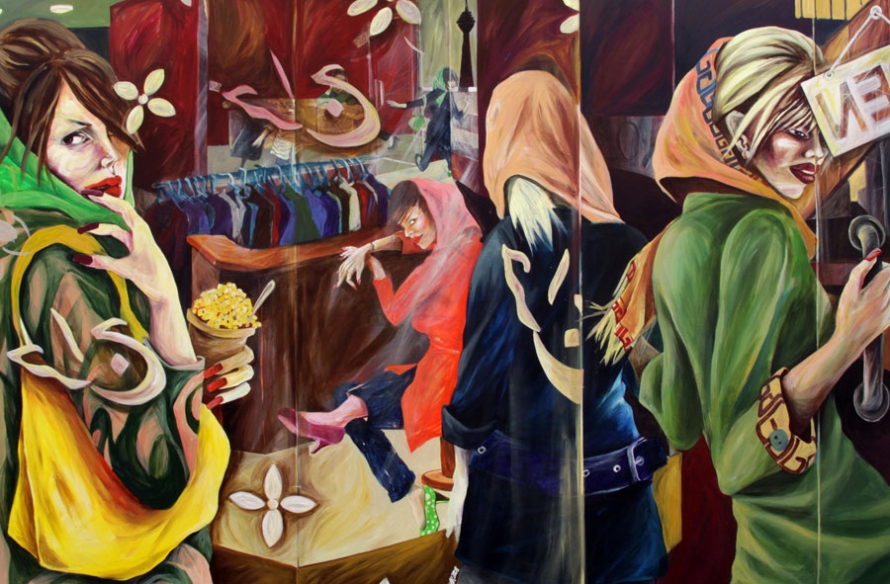
There has been a flurry of commentary recently that claims something of a “silent revolution” is underway in Iran today. It is supposedly a revolution against — or, at the very least, a flagrant disregard for — government prescriptions for public decency. It is situated on the surfaces of women’s bodies and assumes bright colors, brand names, fitted contours, and flowing hair. It is supposedly a revolution against but also of the mandatory veil, or how a new generation of women is taking liberties with it.
We see beautiful young women in the streets of Tehran inviting us to reconsider stereotypical images of Iranian women that predominate in mainstream English-language media. These images are juxtaposed against those of women clad in the black chador – the long flowing cloth, usually black – to clarify the extent of this “revolution” and the substantive difference between these bodily surfaces.
The everyday practice of the mandatory veil, especially in cities, has indeed been noticeably shifting ever since the first generation of women who were born after the 1979 Revolution came of age in the mid-1990’s. This kind of fascination with Iranian women and their sense of dress, however, obscures the complexities surrounding how Iranian women actually practice the mandatory veil. These articles produce simplistic generalizations for the sake of provocative and yet easily digestible reading. They do so by: treating women’s bodily surfaces as a measure of societal progress and morality; romanticizing the notion of resistance; and eliding the significance of class and consumer culture in everyday urban life.
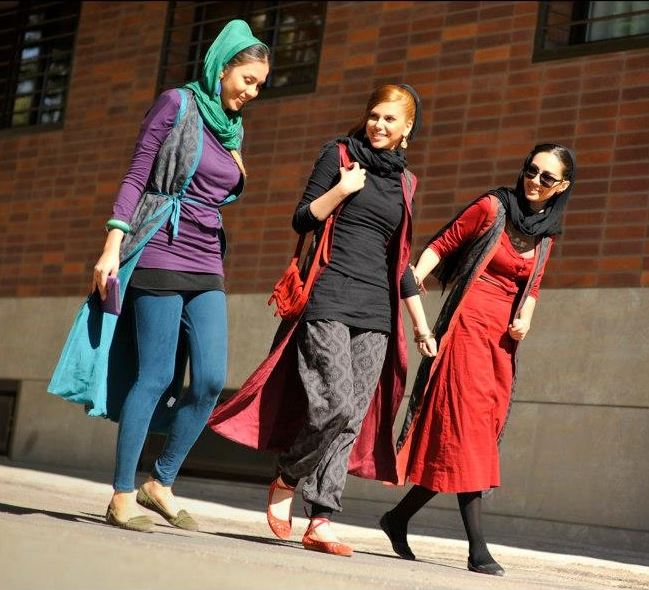
Registers of Morality and Modernity
To begin with, these celebratory representations of young Iranian women in English-language media are actually not very different from official discourses of the Islamic Republic. They share something important in common: the assumption that the surfaces of women’s bodies reflect the moral state of society at large. The history of the nation-state is abundant with discourses and policies that objectify women’s bodies as a register of the moral and physical health of the nation. The management of virginity, contraception, fertility, abortion, the covering of certain body parts, the sequestering of women’s spaces, restricting their mobility and limiting their access to public spaces all feature as part of this history. A magazine article that focuses on women’s veiling practices reproduces this history by once again auditing what is happening to female bodies as a way of deciphering some widespread zeitgeist.
The objectification of women’s bodies as an index of individual and public morality was, after all, precisely the notion animating the introduction of the mandatory veil. During the 1979 Revolution, the issue of hijab took center stage in Iranian politics, spurring controversy and national debate. For many religious radicals, women’s fashions became symbolic of the moral bankruptcy of the Shah’s regime, and so they advocated for the mandatory hijab to supposedly redeem the honor of the nation and advance an authentic Islamic-Iranian identity against Western “cultural invasion” (tahajom-e farhangi). To this end, Iranians were (and continue to be) subjected to the so-called Guidance Patrol (gasht-e ershad): an official organization among whose goals is to police “public propriety” by targeting both men and women deemed to be engaging in inappropriate behavior or dress.
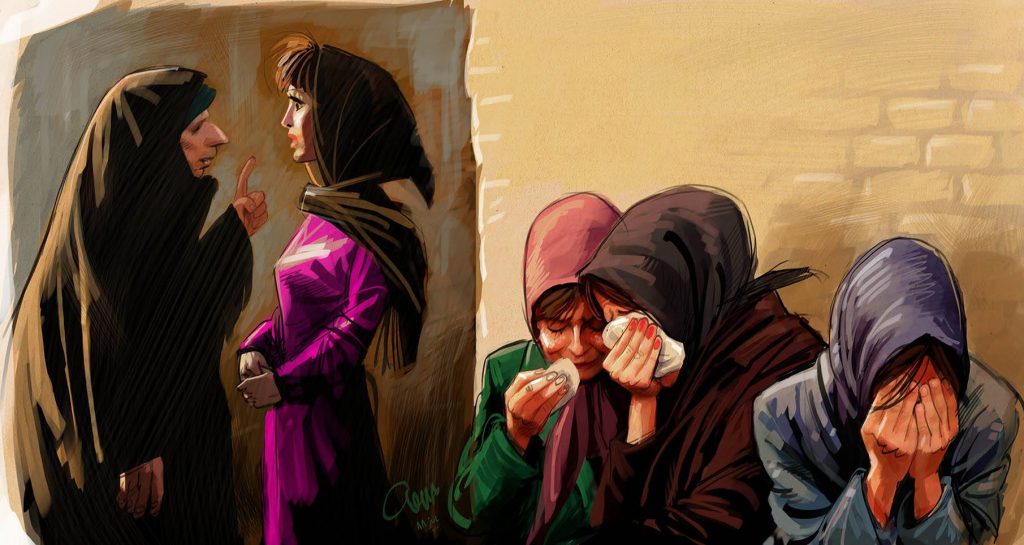
Ironically, journalists and photographers who want to illustrate everyday ways in which people defy such moral policing deploy the same approach. Their evaluation obviously differs, but they just as obviously rely on no more than a reading of bodily surfaces to ascribe political intent.
The narrative of women’s defiance of state oppression through their style of hijab perpetuates this patriarchal approach of constantly locating either freedom or oppression on their bodies alone. Whether it is the Guidance Patrol imposing state standards of morality on women’s clothing or roving photojournalists searching for resistance in those very modes of covering, women’s bodily surfaces are utilized as a site for measuring morality, and thus in need of either state intervention or commentary in mass media.
Romanticizing Resistance
Then there is the not-so-simple matter of identifying “resistance.” To be sure, trendy forms of hijab that are shorter and hug one’s hips – while coupled with make-up and abundantly exposed hair – contrast sharply with the normative aesthetic of the mandatory veil as loosely fitting and working to thoroughly cover the body. From the perspective of the state this departure is indeed a matter of concern. In fact, it was during the latest anniversary of the ban on wearing hijab in public, imposed by the first Pahlavi Shah in 1936, that a major clerical figure and former head of Iran’s Guardian Council (Shora-ye Negahban) lamented what he referred to as “hip” forms of hijab for failing to provide “true coverage” of the female figure. Yet to assume that wearing the mandatory veil in ways that break with this state-sanctioned aesthetic is necessarily a deliberate act of defiance is problematic for several reasons.
Firstly, it perpetuates the view that deliberate action is only worth regarding as truly deliberate when it breaks with convention or challenges state prescriptions. This notion of “agency-as-resistance” is something of a trend itself, and has already been critiqued as overly animating representations of everyday life in Iran for English-speaking audiences intrigued by the narrative of a generational shift. As Saba Mahmood, for example, has convincingly demonstrated in her seminal work, The Politics of Piety (2005), agency-as-resistance is not a useful tool for social analysis when we begin to take it for granted. It leaves us with a neat juxtaposition between those who resist and those who do not. The former are necessarily activating an allegedly inherent capacity as true individuals while the latter cannot as they are either burdened by fear or “false consciousness.”
So it is not surprising that article after article after article in this “fashion revolution” genre deploy this figure of the young, skinny, upper-class, colorfully-clad and trendy woman. She evokes the liberal subject determined to express herself in the face of religious persecution; she signifies the progressive, Westernized, political challenger to a theocratic state. Conversely, the woman who does not fit these criteria is forever relegated to our imaginaries, at worst as the backward, anti-Western tool of the patriarchal state, or at best, as a helpless victim of it.

Secondly, assuming a simple correlation between women’s ‘inner’ beliefs and their ‘outer’ appearances not only distorts the complexities informing practices of veiling, but also the potential for resistance itself. It suggests that women who consider themselves religious and practice the veil in ways that happen to be prescribed by the state must therefore support the state. In reality, however, modes of covering can be dependent on any number of factors including but not limited to city of residence, economic class, social status, family culture, interpretations of piety, age, personal preference, norms of the workplace or school, etc.
Indeed, this way of thinking – whereby bodily exteriors are taken for granted as a definitive indicators of socio-political beliefs – is dramatically challenged when one recalls the historical moment when mandatory veiling was imposed shortly after the Revolution. Both women who practiced the veil and those who did not marched together for the right of all Iranian women to choose whether or not to engage in this practice. Making assumptions regarding women’s religious or political persuasions based on their outer appearance reproduces the patriarchal obsession with women’s bodies.
Capital and Cultures of Consumption
Taking for granted agency-as-resistance also elides the many other factors that have contributed to the rise in popularity of these clothing styles. As opportunities for consuming such fashions are widely available in the formal economy (e.g. H&M, Zara, Mango, etc.) they cannot be summarily regarded as ‘resistance’; the manufacturing and import of these ‘revolutionary’ garments is ordinary business. Rather, this economy in hijab fashions and the widespread patterns of their consumption should also be considered in terms of the commodification of social identity as something materially pliable and available for sale.
The pursuit of fashion in contemporary capitalist society — which Iran continues to be — often goes hand-in-hand with consumerism and the opportunities it creates for imagining social identities in terms of the commodities we purchase. As such, practices of veiling that do not subscribe to official standards, which after all, are deliberately designed to reconcile socio-economic differences, must also be regarded in terms of the consumerist logic focused on social distinction and typification.
Such consumerism has expanded in Iranian society over the past two decades, as neoliberal economic reforms took effect in the 1990s. Yet a shared feature of these “fashion revolution” articles is their lack of appreciation for the difference that class makes in the capacity of ordinary Iranians in engaging in such resistance through fashion; this despite their exclusive focus on the urban middle and upper classes.
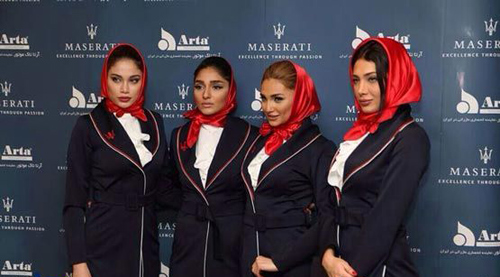

We cannot dismiss, for example, the rapid economic development and technological improvements that occurred following the end of the Iran-Iraq War, along with the substantial increases in employment and the expansion of the middle class. Accessibility to international markets and media outlets such as satellite television, and later the Internet, have buttressed consumerist culture amongst urban Iranians. If the “hip” hijab fashions criticized by conservative elements are by now ubiquitous and widespread in urban centers, it is also because they represent everyday practices according to which class difference and social status are constructed.
Such consumerism in Iran today (also manifested in ever-expanding shopping malls) is lauded by foreign commentators as a sign of progress in women’s rights or level of individual freedom. Yet the material capacity to follow ‘Western’ fashion trends and media content are not easily available to the millions of working-class Iranians struggling to eek out a viable everyday existence, much less the 10.5% of the population who are estimated to be living under the poverty line.
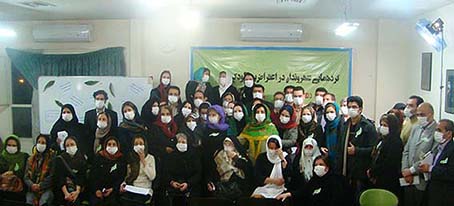
In addition to the risk of perpetuating simplistic dichotomies, uncritically celebrating the consumerism of middle and upper-class urbanites as proof of some sort of a progressive social revolution and its fashionable manifestations in Iran today takes attention away from the work and struggle of Iranian women’s rights activists who have for years fought against domestic and state patriarchy. Energies have been spent and lives have been lost on the path to changing discriminatory laws and societal prejudices, such as the 1 Million Signatures Campaign launched by a group of Tehran-based activists. Online and on the streets, Iranian women have always been at the forefront of fighting not just for gender justice, but also for political, economic, environmental, urban, religious and ethnic justice, and they have been doing so with or without hijab for the last century.
Reducing their struggle to the tightness or length of their clothing in the manner shown by these articles reproduces exactly the kind of sexist logic that elevates women’s appearances as a register of morality inviting intervention, or as an occasion for conspicuous consumption. Iranian and other transnational feminists have been challenging such sexism for decades. Instead of dealing in such binaries and stereotypes, we would do well to acknowledge the complexity of women’s realities and understand how they navigate their lives through the intersecting systems of the state, family, capitalism, religion, and patriarchy.
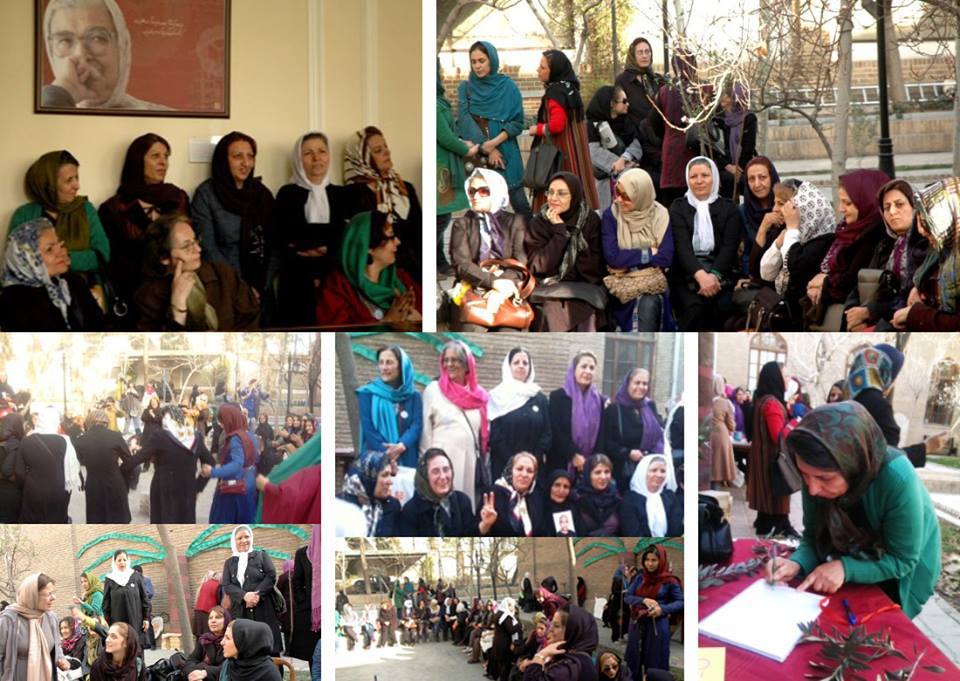












16 comments
Really great piece which reiterates a fundamental social sciences notion that simple binaries never help anyone in better understanding the world they live in – especially when the binary division ironically ends up mirroring itself and affirms a sexist perception, just like how you have so eloquently pointed out regarding women’s bodies becoming the symbolic space of that beloved, false dichotomy of ‘Tradition versus Modernity’.
I greatly enjoy, and learn from, the articles posted on this website!
Thanks for the informative read. I look forward to reading more from you.
There are some very valid points raised in this piece, however I take issue with the notion that only that the disregard for the official dress code is only limited to the upper classes as a means for signifying their social status.
There are millions of working class girls in Iran who exhibit the exact same kind of rebellion (if not with more fervor) everyday and all you need to do is to go to places like the south side of Tehran to see them. Now they might not end up on fashion blogs or be able to afford the real brand name items, but that doesn’t mean they don’t exist.
Rouhani made an election promise to end bias and move away from the hostile domestic climate fostered by Ahmadenijad against, women minorities and political opponents.Sadly, human rights under the so-called “moderate” Rouhani presidency is a case where past is prologue.
Thanks for the great article. I look forward to reading more from you.
link to related research about consumerism and freedom in Iran: http://dissertationreviews.org/archives/7502
The imposition of the ‘chador’, veil, burkha, hijab (whatever you want to call it), is used by the dictators in power as a form of ‘repressive state apparatus’ (Althusser). It is fascist, authoritarian, patriarchal and the sooner the women in Iran have the freedom to wear what they like, the sooner they will be able to cast off the imprisoning shackles of theocracy.
Hm…
The point is well-taken that we should take as much care to not fall into the covered-backward/uncovered-modern binary as we do the covered-authentic/uncovered-imperialist one, as well as the point that to use women’s bodies as a measure of authenticity in either case is patriarchal and wrong. But to measure freedom in terms of a woman’s right to choose how she represents herself – and the presence or absence of restrictive laws that regulate these representations – is, I think, not bad. Perhaps resistance to such regulation shouldn’t be romanticized in the manner suggested by the article (i.e. confusing changes in style with deliberate acts of resistance), but it should certainly be supported. And while we shouldn’t elevate women’s appearances as a measure of morality, surely we should elevate their struggle to choose their appearances without threat of legal sanction (two very separate issues).
Related to another commenter’s concern that the article implies that the issue of dress is a bourgeois issue (because of consumption patters), I’m not so sure what’s so wrong with evoking “the liberal subject determined to express herself in the face of religious persecution”. Religious persecution exists, as do subjects determined to express themselves. That that this is often subject to the imperialist hijacking of images doesn’t make it any less real – nor does it make the stuggle any more ‘Western’, ‘bourgeois’, etc. It would seem that (corporate media misrepresentations aside) the issue of a woman’s right to self-expression is a universal issue of rights whether we call it ‘liberal’ or not.